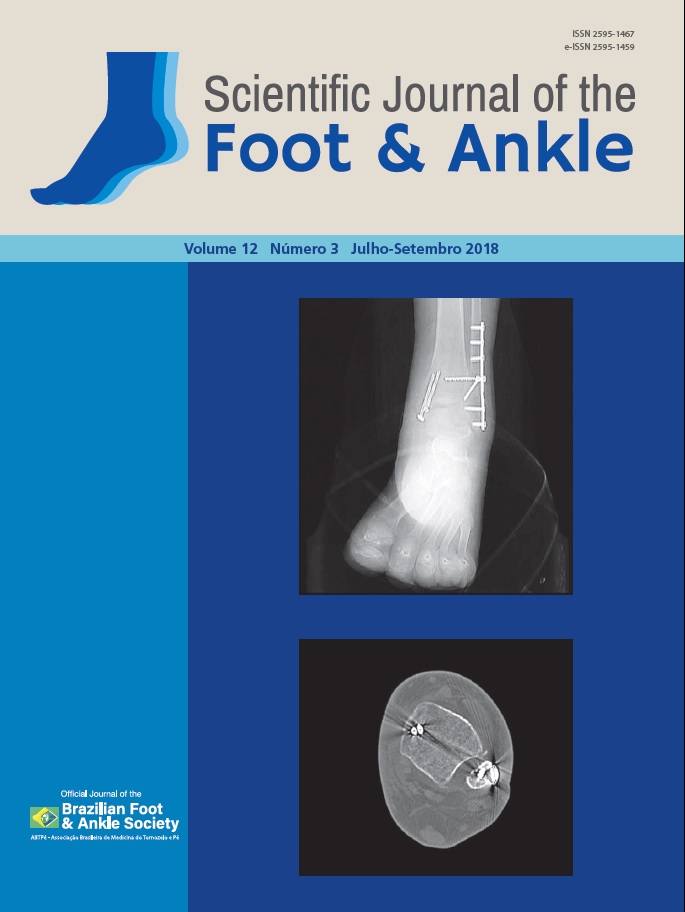Rate of unsatisfactory syndesmotic reduction by means of a postoperative tomographic study
DOI:
https://doi.org/10.30795/scijfootankle.2018.v12.761Keywords:
Ankle Injuries, Tomography, Wounds and injuriesAbstract
Objective: To analyse the rate of unsatisfactory reduction in syndesmosis injuries by means of a postoperative tomographic study. Methods: This was a prospective study conducted from March to December 2017. Thirty patients with syndesmosis injury were selected, and ankle tomography was performed during the first postoperative period. A form developed for the study was used to collect demographic data (sex and age in years) and postoperative data (operated side, Weber classification, computed tomography results and need for surgical reoperation). The images were evaluated using tomographic criteria. The intraoperative analysis was performed through radioscopy and by direct visualization of the syndesmosis. Results: The majority of the patients were male (56.7%), ranging in age from 17 to 51 years; 53.3% of the patients were operated on the left side; 66.7% were classified as type C; and 66.7% did not undergo reoperation. Regarding the rate of unsatisfactory syndesmosis reduction, it was found
that 25.9% of the analyses of the established variables presented unsatisfactory results. It was observed that 74.1% of the criteria presented satisfactory results; however, criterion B presented a significant rate (37%) of unsatisfactory results. Conclusion: Based on the computed tomographic scans, there was a high percentage of unsatisfactory reductions in syndesmosis injuries. Thus, it was concluded that, even using the correct fixation techniques and adequate intraoperative scopic monitoring, distal tibiofibular joint incongruence can still be observed when investigated using postoperative tomography. Level of Evidence II; Diagnostic Studies.




